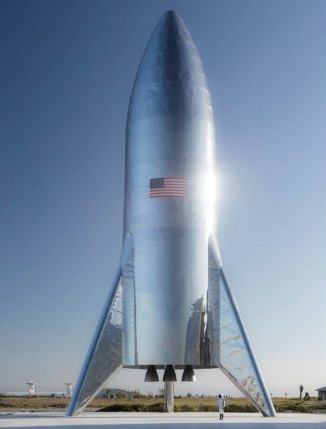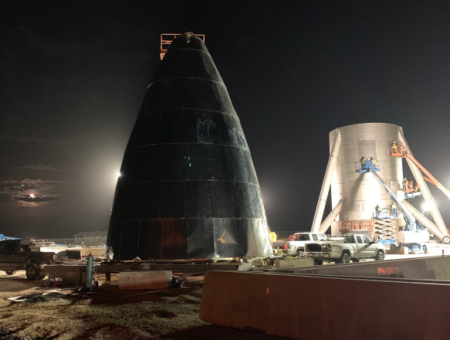SpaceX ramps up Raptor engine tests
Capitalism in space: SpaceX has conducted another Raptor engine test, this time running the engine at full power.
“Raptor just achieved power level needed for Starship [and] Super Heavy,” Musk tweeted just after 3 a.m. EST (08:00 GMT) Feb. 7.
Musk did not say how long the test was or if it was at full power. The Feb. 3 burn was only about two seconds and at about 60 percent power. However, he said the latter test reached a chamber pressure of 257 bar, or about 3,700 pounds per square inch, and an estimated force of about 172 metric tons with “warm propellant.”
Musk has said that they will be doing hopper test flights with their Starship prototype this spring, but they can’t do that until they have three working Raptor engines. It seems to me that it will be at least a few months before this engine is tested sufficiently to be ready for flight. Then they need two more finished engines.
Don’t expect the first Starship hopper flights for at least six more months, if that soon.
Capitalism in space: SpaceX has conducted another Raptor engine test, this time running the engine at full power.
“Raptor just achieved power level needed for Starship [and] Super Heavy,” Musk tweeted just after 3 a.m. EST (08:00 GMT) Feb. 7.
Musk did not say how long the test was or if it was at full power. The Feb. 3 burn was only about two seconds and at about 60 percent power. However, he said the latter test reached a chamber pressure of 257 bar, or about 3,700 pounds per square inch, and an estimated force of about 172 metric tons with “warm propellant.”
Musk has said that they will be doing hopper test flights with their Starship prototype this spring, but they can’t do that until they have three working Raptor engines. It seems to me that it will be at least a few months before this engine is tested sufficiently to be ready for flight. Then they need two more finished engines.
Don’t expect the first Starship hopper flights for at least six more months, if that soon.



